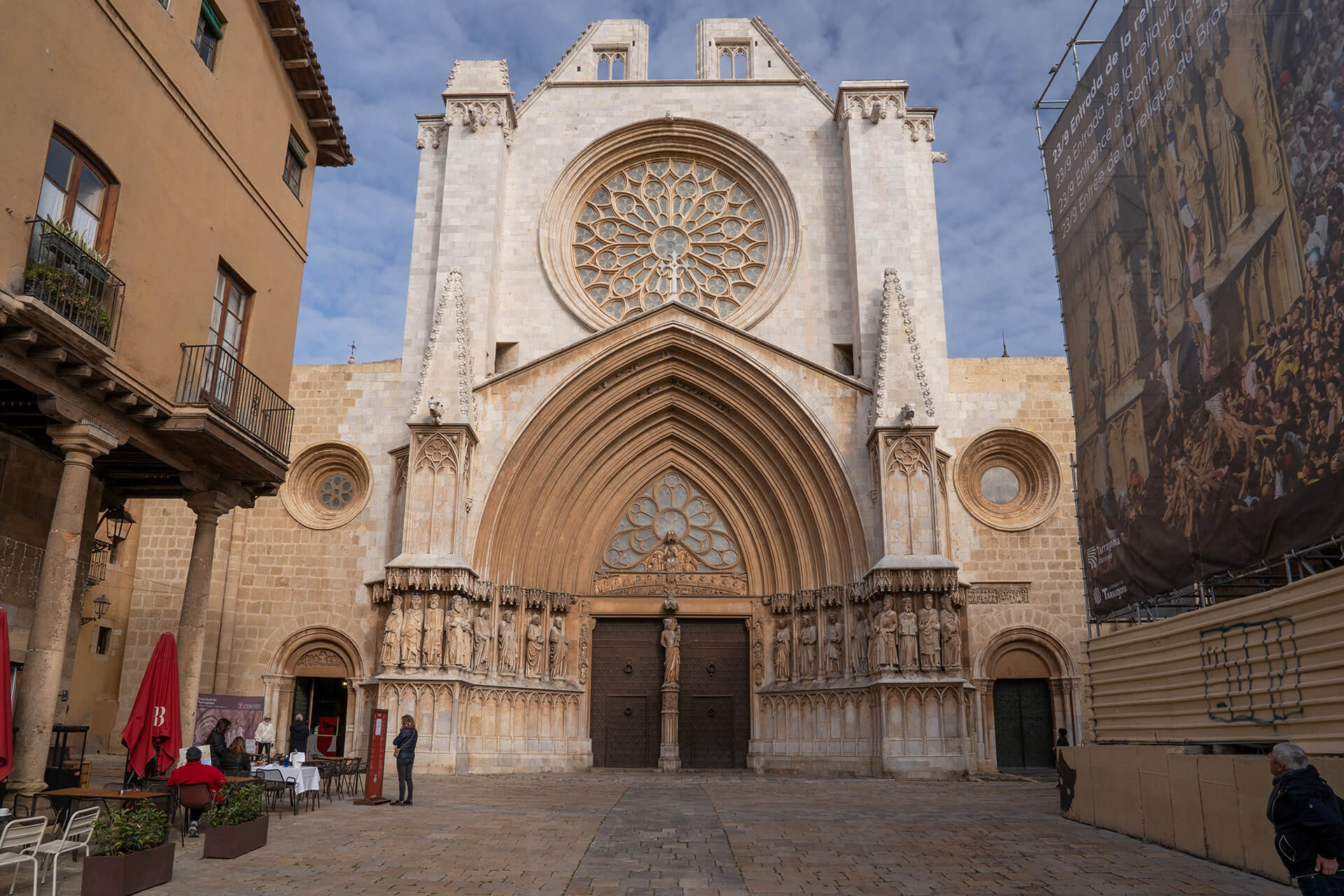Main altarpiece
Highlights of the Cathedral / Main altarpiece
The main retable, a work in polychrome alabaster and glass paste by Pere Johan, sculpted between 1426 and 1434, is a magnificent example of Catalan Gothic sculpture. A large limestone plinth supports the structure, decorated with exemplary scenes accompanied by plant motifs and the emblems of the archbishops Dalmau de Mur, its instigator, and Pere Sagarriga, its patron.
On the plinth, a beautifully crafted predella shows six scenes from the life and martyrdom of Saint Thecla: the young woman listening to Saint Paul preach in her native Iconium, the various failed martyrdoms to which she was subjected and ending with the discovery and transfer of the relic of her arm, which reached the city in 1321 from Armenia Minor thanks to the intercession of King Jaime II.
The reliefs are separated by stanchions crowned with small pinnacles and canopies containing holy virgins and martyrs: Catherine, Barbara, Lucy, Eulalia of Barcelona, Agatha, Anastasia, Cecilia and Agnes. In the centre of the altarpiece is the image of the Virgin and Child flanked by the carvings of Saint Thecla and Saint Paul; around this are twelve reliefs depicting scenes from Christ’s childhood, the Passion and Resurrection, Ascension, Pentecost and Coronation of the Virgin.
The upper part of the retable is dominated by three large free-standing sculptures: in the centre, the Virgin Mary, flanked by Saint Thecla and Saint Paul. Each is placed under a very high, openwork and gilded pinnacle.
Twelve reliefs with scenes from the New Testament occupy the panels between the images. On both sides of the altarpiece, forming part of the same structure, are two doors with elegant flamboyant latticework crowned by two corbels with the figures of Saint Olegarius and Saint Fructuosus, both archbishops of Tarragona. Above the frontispieces are the images of the archangels Saint Michael and Saint Raphael, carved by Perris Ostris and polychromed and gilded using the “estofado” technique by the Italian painter Pietro Paolo da Montalbergo during the second half of the 16th century.
Sepulchre of John of Aragon
To the right of the altarpiece is the marble tomb of John of Aragon and Anjou, royal infant son of Jaime II and Blanche of Naples, who was patriarch of Alexandria and archbishop of Toledo and Tarragona and officiated at the consecration of the Cathedral in 1331. The sarcophagus is the work of the Sienese sculptor Tino di Camaino. It stands on two lions and is surrounded by the images of the patron saints of the city, Saint Thecla and Saint Fructuosus, and three saints related to the archbishop: Saint Elizabeth of Hungary, Saint Louis the Bishop and Saint Louis the King. Just above, the soul of the deceased, assisted by two angels, rises towards God the Father. An arcosolium with tracery frames the tomb, above which is the cabinet where the relic of the arm of Saint Thecla was kept until the new chapel was built in the 18th century.
Above the mausoleum, under a pointed gable, is a mullioned niche which, until the siege of the Cathedral by Napoleon's troops, housed the original reliquary of the arm of Santa Tecla. This niche now houses various relics.






